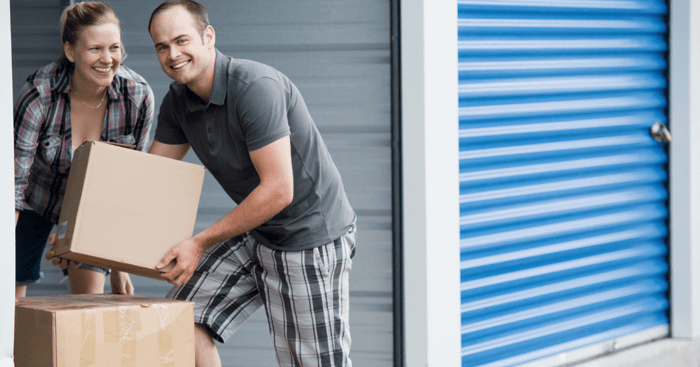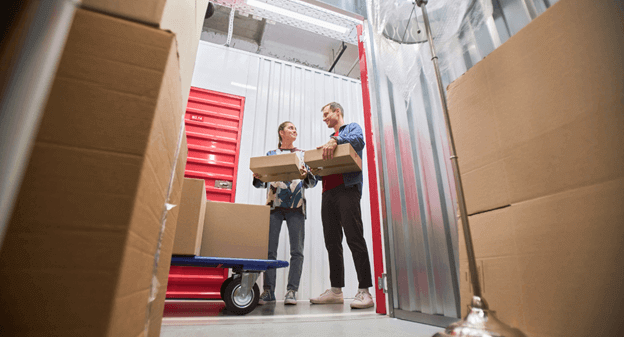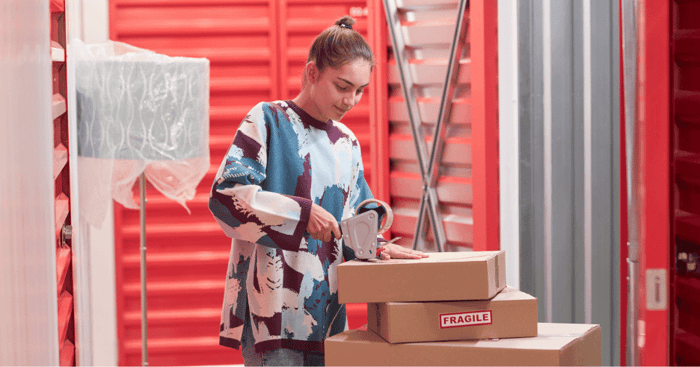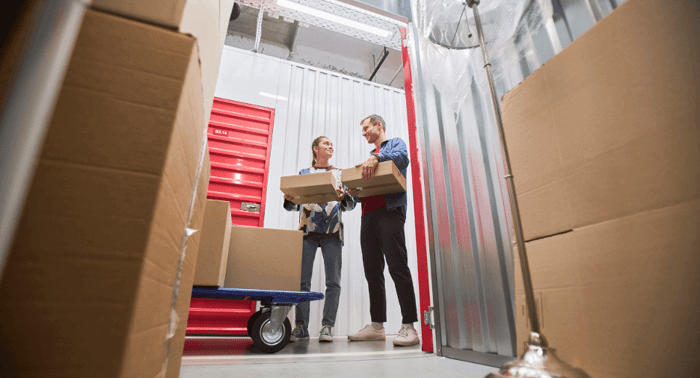
Renting a storage unit for the first time can feel like stepping into unfamiliar territory. With so many options; drive-up units, climate-controlled storage, RV and boat parking; it’s easy to get overwhelmed. But don’t worry. This guide offers practical self storage tips for first-time renters, whether you're dealing with a humid climate in the South, cold winters in the Midwest, or dry heat in the West, so you can confidently choose the right storage solution for your region and your needs.
Let’s dive into practical, climate-aware self-storage tips for first-time renters, brought to you by the experts at The Storage Advantage.
Why First-Time Renters Turn to Self Storage
People turn to storage for many reasons:
Moving or relocating
Home renovations
Downsizing or decluttering
Seasonal transitions
Business inventory overflow
RV, boat, or trailer storage
Life events like college, divorce, or a growing family
Each of these scenarios presents unique storage needs. For example, furniture and electronics in humid regions are better off in climate-controlled units to prevent mold, warping, or corrosion.
What Size Storage Unit Should a First-Time Renter Get?
This is one of the most common questions, and for good reason. Renting too small leads to cramped, hard-to-navigate spaces. Too large, and you’re overpaying.
Here’s a quick guide to help you choose the correct size:
Unit Size | Fits Best For |
5x5 | Small closet – perfect for boxes, small decor items, or seasonal clothing |
5x10 | Studio apartment – great for dorm items or one bedroom |
10x10 | One-bedroom apartment – furniture, mattress, appliances |
10x15 | Two-bedroom apartment – more furniture, shelving, tools |
10x20+ | Full home, vehicles, or small business inventory |
Tip
Use our size calculator at thestorageadvantage.com to visualize what each unit can hold.
Do I Need Climate-Controlled Storage for Clothes or Furniture?
Yes, especially if you live in a region with extreme temperatures or humidity. Climate-controlled units maintain a steady environment that protects sensitive materials like:
Wood furniture prevents warping or splitting
Leather goods are resistant to mildew and cracking.
Electronics reduce moisture-related damage
Clothing and fabrics shield against mold, mildew, and insect damage
Books, records, and documents preserve paper quality
In humid areas like the Gulf Coast or Southeast, climate-controlled storage is highly recommended for long-term storage of any porous or organic material.
Types of Storage Units Explained
Not all units are alike. Choosing the right type helps you store smarter.
Type | Best For | Perks |
Bulky items, moving boxes | Park right at the door for easy access | |
Electronics, wood, clothing | Temp & humidity protection | |
Extra privacy, business storage | Great for urban or dense settings | |
Boat and RV Storage | Seasonal or year-round vehicle storage | Open or covered options |
Inventory, office furniture | Flexible, scalable, and secure |
What Should First-Time Renters Know Before Moving In?
Being prepared can save time and headaches. Here are a few essential steps:
1. Inventory Your Belongings
Make a list to keep track of what you’re storing and where it’s placed in the unit.
2. Pack Smart
Use clear plastic bins for visibility, label boxes on all sides, and don’t overpack to avoid crushing fragile items.
3. Elevate Items Off the Floor
Place a tarp or wooden pallet under furniture and boxes, especially in regions prone to flooding or high humidity.
4. Disassemble Furniture
Break down bed frames, tables, and shelving. Wrap parts in protective blankets or padding.
5. Plan Your Layout
Keep frequently used items near the front of the unit, and leave a clear path down the center.
Regional Storage Tips Based on Climate
Climate plays a significant role in determining what storage type is right for you. Here’s how to adjust your approach based on where you live:
Region | Key Consideration | Recommended Storage Type |
Humid (South, Gulf Coast) | Mold, mildew | Climate-controlled, elevated boxes |
Cold (Midwest, Northeast) | Freezing temperatures | Insulated units, wrap electronics |
Dry/Hot (Southwest, Desert) | Heat, dust | Climate-controlled, sealed bins |
Coastal (Pacific NW, Florida) | Salt air, moisture | Enclosed or indoor units |
Moving Into Your Storage Unit: Pro Tips
Moving day doesn’t need to be stressful. Follow these tips to simplify the process:
Use uniform box sizes for easier stacking
Bring a step stool or a small ladder to access the upper tiers
Take photos of complex items before disassembling
Consider using plastic wrap to bundle cords, screws, and hardware
Secure your unit with a heavy-duty disc lock
Bonus: How to Store Specific Items
Boat Storage
Rinse and dry thoroughly to prevent salt buildup
Remove electronics and valuables
Use a fitted, breathable cover
RV Storage
Empty tanks and disconnect the battery
Cover tires and close all vents
Use a moisture absorber inside
Home Storage (Toys, Clothing, etc.)
Vacuum-seal clothing for space savings
Use cedar blocks or lavender sachets to deter pests
Store soft goods off the ground
Business Storage
Use shelving for vertical inventory
Keep documents in waterproof bins
Rotate inventory seasonally if needed.
Common Mistakes to Avoid
Choosing a unit too small, always size up if you’re unsure
Storing items directly on the floor, moisture can creep in
Skipping insurance, protect your investment
Not securing the unit, use high-quality locks
Ignoring your region’s climate, the wrong unit can ruin valuables
FAQs
What size storage unit should a first-time renter get?
Start by inventorying your items. A 5x10 is ideal for dorm rooms or studios, while 10x15 works well for a two-bedroom apartment. When in doubt, go one size up.
Do I need climate-controlled storage for clothes or furniture?
Yes, especially in humid or coastal regions. Climate control prevents mold, mildew, and damage to organic materials like wood, leather, and fabric.
What should first-time renters know before moving in?
Prepare an inventory, use weather-resistant packaging, elevate items off the floor, and organize the unit for an accessibility plan based on your region’s climate and seasonal risks.
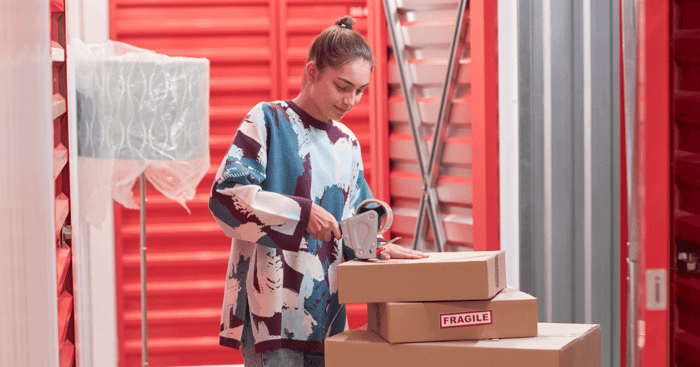
Store Smart, Store Safe
Whether you’re storing for a season or a new life chapter, self-storage should offer peace of mind and practical benefits. With the right unit, smart packing, and climate-aware strategies, you’ll protect your belongings and make the most of your space.
The Storage Advantage offers a wide range of options, including drive-up, climate-controlled, RV, boat, and business storage solutions, designed to suit your needs, wherever you live.
Get Started Today
Find the perfect storage unit for your climate, budget, and lifestyle at:
https://thestorageadvantage.com/
Let us help you get the space you need, with the confidence you deserve.

